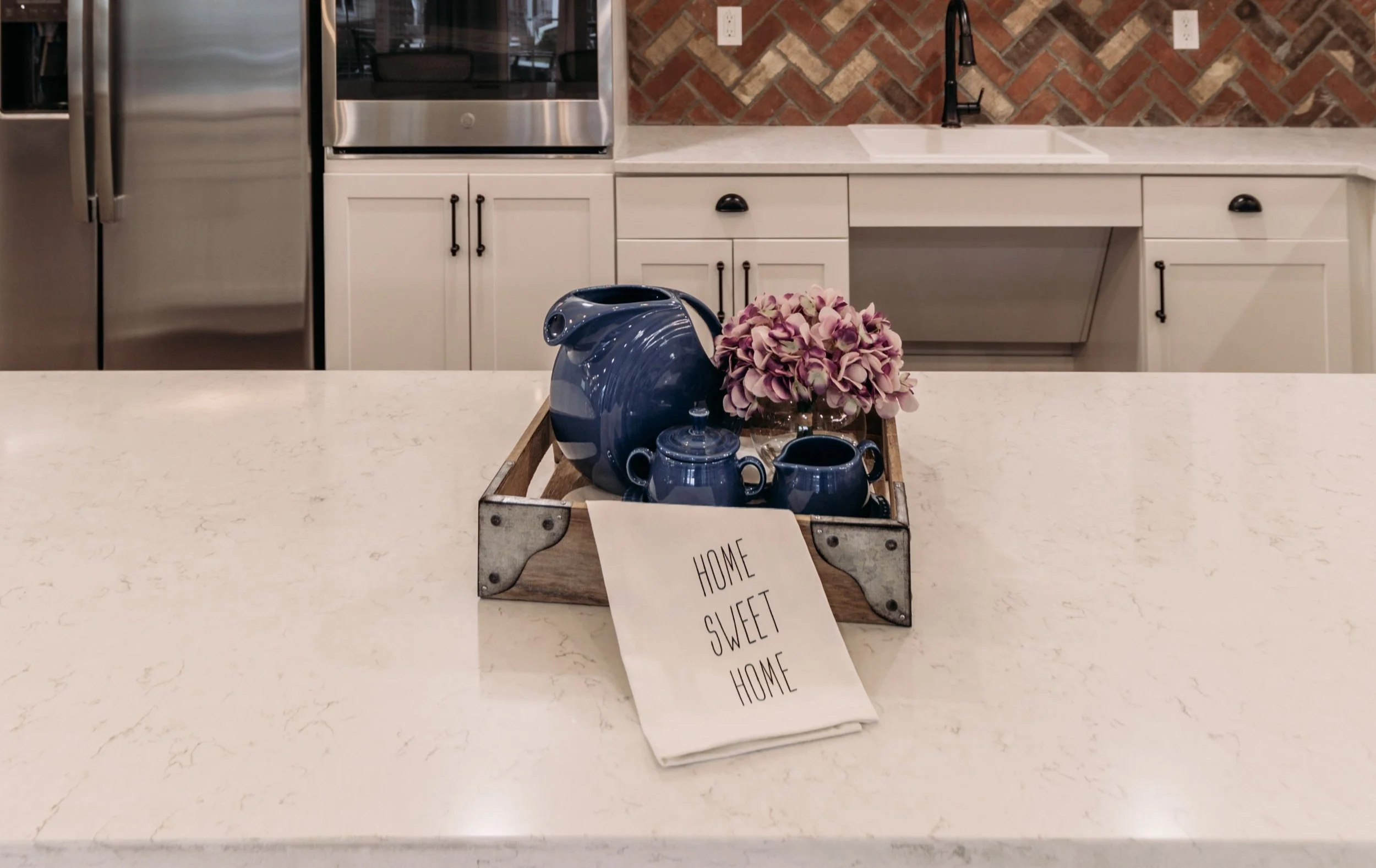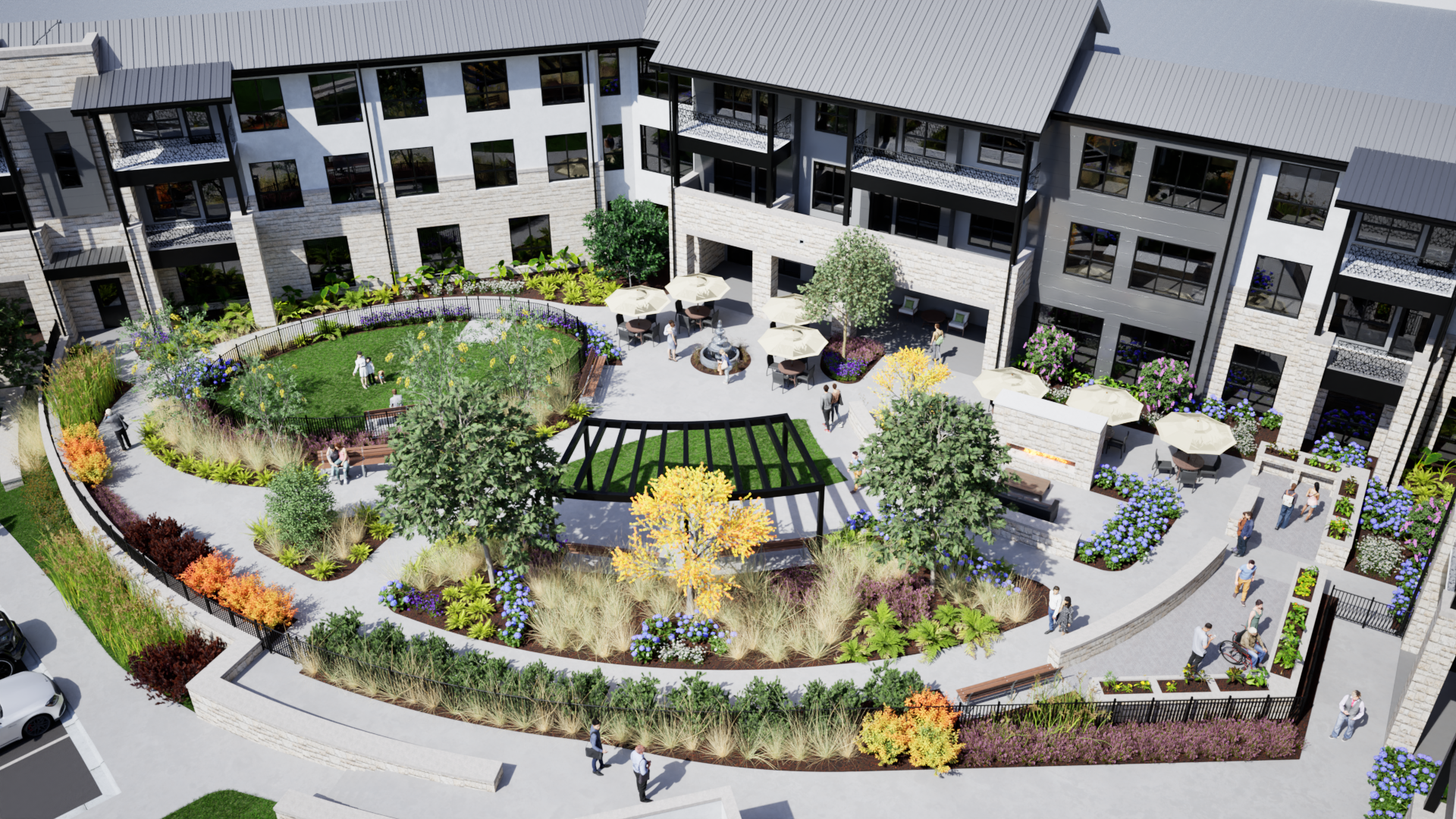Senior Living in 2022 and Beyond: Green Living Is the Place To Be
Green living is moving into senior living communities, and it’s bringing new residents and cost savings with it. From infrastructure innovations to practice changes, communities are embracing renewable energy and ways to reduce reliance on traditional fossil fuels and the costs that go with them.
Most recently, Westminster, a senior living community in Austin that we designed, partnered with Freedom Solar to install the first senior living solar energy array in Texas. “The people at Westminster are very forward-thinking in term of sustainability and reducing their carbon footprint,” said Freedom Solar CEO Bret Biggart. The Westminster installation will be accomplished in two phases.
Solar can be used in a wide variety of buildings of all sizes. In short, solar technology converts sunlight into electrical energy. This can be used to generate electricity or stored for future use. Solar panels are usually constructed from silicon installed in a metal panel frame with a glass casing. When particles of light hit the panels, this results in a PV charge that creates an electric current.
Solar power is a renewable and infinite energy source, and it creates no harmful greenhouse gas emissions. Solar’s carbon footprint is quite small; and solar panels can last for 25 years or more without losing efficiency. A solar energy system can save up to $90,000 each year, depending on the building’s roof size, sunlight exposure, local energy rates, and solar incentives.
It’s important to note that solar panels alone won’t work during a power outage. Because they are wired into your electric company’s grid, the panels stop producing energy when the power goes down. However, when a solar batter backup is added to a solar PV system, you can maintain power during an outage.
Solar panel installation is just one innovation catching on in senior living. Others include:
Rainwater harvesting systems. In a senior living community (or even a building), this generally involves a fully-realized system combining water capture, holding tanks, filtration systems, and pressurized water provided through pumps or a gravity tank. There are two types of harvesting systems—passive and active. Passive systems don’t require a pump or plumbing and are pretty simple – rain falls on the roof or other surface and drains into a container/collection point. Active systems are far more advanced and involve rainwater catchment systems, filtered storage tanks, pumps, and water purification systems.
Low-flow water fixtures. These toilets, faucets, showerheads, etc., use significantly less water, thereby saving money and energy. Some people assume that low-flow translates into less pressure, but this isn’t necessarily true. Many low-flow showerheads, for example, pack plenty of water power. Specifically, aerating and laminar heads provide a satisfying pressure level while reducing water waste.
High-efficiency light fixtures. This is low-hanging fruit if you are looking for a starting place for your building or community. These fixtures are relatively inexpensive and easy to access. They produce the same amount of light as less energy-efficient products, but they use up to 75% less energy, produce far less heat, and last up to 10 times longer.
Recycled building materials. Wood, brick, insulation, plastics, glass, building blocks, and wall coverings are among the most popular recycled building materials. Recycled materials are environmentally friendly and cost-efficient. At the same time, materials made from plants and other resources are growing in popularity. It’s highly renewable, cheaper than traditional wood and other materials, and just as aesthetically pleasing. More sustainable materials like Timbercrete, a blend of cellulose, cement, sand, and binders form a more energy-efficient version of concrete, are growing in popularity.
LEED and WELL Certification. Leadership in Energy and Environmental Design (LEED) certification is the most widely- used green building rating system. It provides a framework for healthy, energy-efficient, and cost-effective green buildings. Having LEED certification may mean significant tax breaks and grants and the ability to expedite permits for certain projects. There are four levels of certification: certified, silver, gold, and platinum. The WELL Building Standard is a performance-based system for measuring, certifying, and monitoring features of the built environment that affect health and wellbeing through air, water, nourishment, light, fitness, comfort, and mind. The certification is administered by the International WELL Building Institute (IWBI). It is grounded in medical research regarding the connection between people’s health and the buildings where they spend their time.
Green senior living communities are good for the environment, but green living is also good for residents. Studies suggest a direct connection between green communities and clean environments and residents' mental/physical health. In one study, people in green buildings scored 61% higher on cognitive tests than those in communities that lacked green building conditions. Other research suggests that green communities give seniors a greater sense of purpose, personal fulfillment, and better mental well-being.
Savings on energy use vary from building to building, but they can be significant. At the same time, green senior living communities may be eligible for substantial text credits. For instance, the current commercial tax deduction is about $1.80 per square foot for buildings/communities that show a documentable 50% reduction in green energy usage.
Contact us here or call us at 512-231-1910.
Check out one of our very own green, energy efficient communities!


















